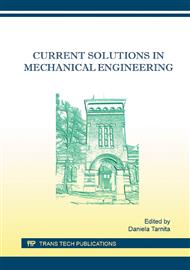[1]
Information on www. infinitewindenergyllc. com.
Google Scholar
[2]
P.S. Kumar, A. Abraham, R.J. Bensingh, S. Ilangovan, Computational and experimental analysis of a counter-rotating wind turbine system, Journal of Scientific & Industrial Research 72 (2013) 300-306.
Google Scholar
[3]
Jamieson, P. Multi Rotor Systems, in Innovation in Wind Turbine Design, John Wiley & Sons, Ltd, Chichester, UK (2011).
Google Scholar
[4]
B.R. Hohn, Future transmissions for wind turbines, Applied Mechanics and Materials Vol. 86 (2011) 18-25.
Google Scholar
[5]
S.H. Park, H.D. Zang, J.H. Kim, K.H. Shin, Design and application of a planetary gearbox for small wind turbines, Applied Mechanics and Materials Vols. 271-272 (2013) 818-822.
DOI: 10.4028/www.scientific.net/amm.271-272.818
Google Scholar
[6]
A.O. Bligh, N.A. Ahmed, Y. Y Zheng, Design and manufacture of a planetary gearbox rig, Applied Mechanics and Materials Vols. 397-400 (2013) 176-188.
DOI: 10.4028/www.scientific.net/amm.397-400.176
Google Scholar
[7]
F.H. Bursal, F.A. Folino, J.E. Maslow, In-line transmission with counter-rotating outputs. Patent no. US 6186922 B1 (2001).
Google Scholar
[8]
R. Săulescu, C. Jaliu, O. Munteanu, O. Climescu, Planetary gear for counter-rotating wind turbines, Applied Mechanics and Materials Vol. 658 (2014) 135-140.
DOI: 10.4028/www.scientific.net/amm.658.135
Google Scholar
[9]
R. Herzog, A.P. Schaffarczyk, A. Wacinski, O. Zürcher, Performance and stability of a counter–rotating windmill using a planetary gearing: Measurements and Simulation, European Wind Energy Conference & Exhibition 2010 (2010), Warsaw, Poland.
Google Scholar
[10]
Information on http: /savonius-balaton. hupont. hu/111/united-wind-systems-oregonusa.
Google Scholar
[11]
R. Săulescu, C. Jaliu, O. Climescu, D. Diaconescu, On the use of 2 DOF planetary gears as speed increaser, in small hydros and wind turbines. Proceedings of the ASME 2011, IDETC/CIE (2011), Washington, DC, USA.
DOI: 10.1115/detc2011-47042
Google Scholar
[12]
J. del Castillo, The analytical expression of the efficiency of planetary gear trains. Mechanism and Machine Theory 37 (2002) 197–214.
DOI: 10.1016/s0094-114x(01)00077-5
Google Scholar
[13]
D.V. Diaconescu, Fl. Duditza, Wirkungsgradberechnung von zwangläufigen Planetengetrieben. Teil II: Weitere Beispielrechnungen und Vorteile. Antriebstechnik 33 11 (1994) 61-63.
Google Scholar
[14]
O. Climescu, R. Săulescu, C. Jaliu, Specific features of a counter-rotating transmission for renewable energy systems. Environmental Engineering and Management Journal (2011) 1105-1113.
DOI: 10.30638/eemj.2011.160
Google Scholar


